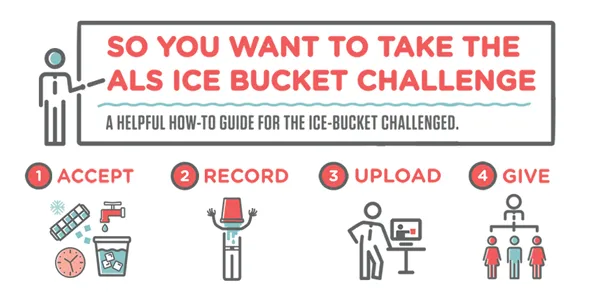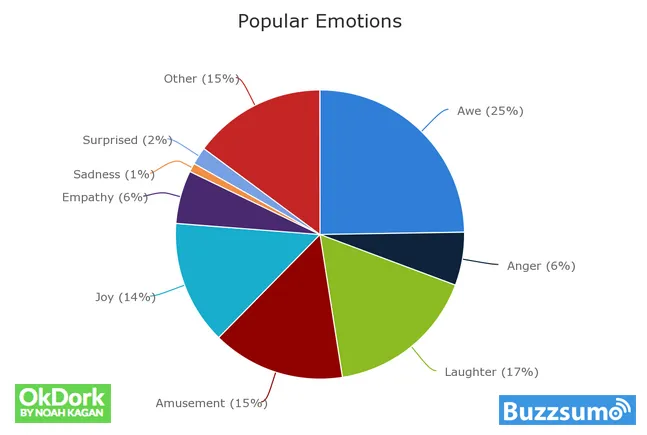Applying Consumer Behavior Principles to Your Marketing Strategy
Increasingly, marketers are looking to science for insights about how and why people share. Drawing from research about psychology, consumer behavior principles, herd mentality and a host of other topics, they have been able to put together a blueprint for creating highly “shareable” products and advertising campaigns.
In this article we’re going to look at six of these key insights and how you can use them for your brand to increase the effectiveness of your campaigns.
Social media, email, instant messaging...they’re all tools for talking about new and exciting things. Social media in particular has become such an ingrained part of modern life that most users now take it for granted. The graph below shows just how quickly networks like Twitter and Facebook have reached the same audience levels as traditional media like television and radio.

(Source)
Businesses have also been quick to pick up on this trend. The ability to encourage the sharing of products, services and content is a skill that is increasingly being held in high regard by marketing departments. Yet, unusually, it’s also a skill that is in short supply. Whilst organizing a social media campaign is relatively easy, creating genuine buzz around a new idea is becoming more difficult, especially in a digital world where the accumulated chatter is growing louder!
Using consumer behavior in your marketing
It’s difficult to pin down, for example, the aspects of a viral post or video that caused it to be popular. A post might receive a million shares on Monday, for example, but had it been published on Tuesday, it might well have been a flop. It’s simply not possible to create the kind of specific iterations that lead to a predefined result regularly and predictably.
This issue of ambiguity is as prevalent in big companies as it is in smaller ones. Speaking to Forbes about Microsoft’s new product Surface, viral marketing wiz Jonah Berger said, “Slick ads, and a big marketing budget, but few people are sharing the ads or spreading word of mouth, and sales have really stalled.”
Yet at the same time some companies are absolutely killing it! And they’re not producing the occasional one-off hit. They’ve somehow been able to build virality into their marketing processes, whether it’s Evian with their rollerblading babies or ALS and the ice bucket challenge.

(Source)
Contagious - why do things catch on?
The first individual to popularize the idea of a data-backed approach to understanding viral content was Jonah Berger, a professor at the University of Pennsylvania. In his book Contagious he outlines six key “attributes” that he believes any idea or product should have to give it the best chance of going viral. All of these are based on solid social principles and can be easily replicated.
Let’s have a look at each of these “principles” or “attributes” in turn...
1. Offer “social currency”
Social currency is all about offering something that makes people who share your idea, product or content look good to their broader social circle. Especially on social media, users are trying to project an idealized version of themselves onto the world. It’s your job as a marketer to give them the “currency” to do this. In fact, a study has shown that this approval seeking is particularly applicable to Facebook.
Always ask, “How can I include something in my product or idea that makes anybody who shares it look good?”
Mobile game designers understand this principle very well. It’s now common to see a “share you high score” option in apps at the end of a game. This gives players the opportunity to “show off” their achievements whilst also promoting the app in the process.
 (Source)
(Source)
Takeaway: One great way that online marketers can attach social currency to a promotion is by positioning it as an “insider opportunity.” By allowing your audience to share a VIP offer, it looks as though they themselves have special status.
2. Include easy-to-remember “triggers”
A “trigger” is simply a feature of a product or idea that is memorable. When triggers are included, products are more likely to stay in the forefront of a customer’s or a potential customer’s mind and they are more likely to share them when an opportunity arises.
The key aspect to remember about “triggers” is that they should be tied to some environmental stimuli. Whenever a customer experiences this stimuli, they will be reminded of your product or promotional materials.
Coca Cola did this remarkably well by associating their brand with Christmas (see the image below). The Coca Cola truck is an image lodged firmly in the mind of many American children!
 (Source)
(Source)
Takeaway: Begin by asking what common occurrences - public holidays, day-to-day tasks, even common words - you can associate your own product with. Is there some regular event or task that you can tie your product or idea with that will bring it to mind in a positive way?
3. Strive for an emotional connection
We share things that we care about. Simple.
Ok, maybe it’s not that basic...but that’s the general gist of the principle. Jonah Berger published a much-referenced study that looked at over 7000 pieces of viral content. One of his key findings was that nearly all of the posts and articles evoked strong emotions like anger and excitement.
 (Source)
(Source)
So it’s important that you try to trigger a strong (preferably positive) emotional reaction in the people using your product or viewing your advertising materials. They’re much more likely to form a connection with your message and, as a consequence, share it.
The well-known Apple vs. Mac adverts are a great example of the use of humour to encourage sharing.
 (Source)
(Source)
Takeaway: Pick one strong emotion that’s applicable to your brand - anger, awe, joy, anxiety, astonishment - and find a way of incorporating it either into your promotional materials or the “story” of your product.
4. Make your brand as “visible” as possible
Ok, so you might be thinking, “Well, that’s what I want to do anyway!” In the context of Berger’s six principles, however, it means incorporating features that “advertise themselves”. This is a topic that has been touched on by many modern marketing experts including Nir Eyal in his book Hooked.
The idea is to make sure you have a clear, “public-facing” message that people who don’t know about what you do can immediately connect with. If, for example, you’re sending out an email that includes an offer that you would like your audience to share with their friends, it’s important that it speaks to both your current client-base and any prospective clients. An increasing amount of research points to banner-blindness and a tendency to skim-read. Simplicity and immediate impact has to take center stage! Remember, the average person is bombarded with over 63 ads a day!

Takeaway: Put yourself in the shoes of somebody who has never come across your product or message before. How will they react to the piece of content you're about to promote or the new branding for your product? Will it pull them into your unique story quickly or will they have to work to find out what you’re about? One of the reasons that certain pieces of content go viral is that they’re able to quickly pull people into a compelling narrative.
5. Provide practical value
This is a principle that is more applicable to promotional initiatives rather than to products or services themselves. A study by the NYT Insight Group has shown that 94% of people evaluate a piece of content’s practical usefulness before sharing it.

(Source)
Takeaway: Providing explicit practical steps to achieve a goal isn’t always appropriate. The key thing to remember is that providing practical value isn’t just about teaching new skills. A new idea, a new tidbit of information, even the promise of practical value - they’re all things to think about prominently including in any content or promotional material.
6. NEVER underestimate the power of story
A study by Jacopo Staiano of Sorbonne University, in which over 65,000 articles were analysed, points conclusively to the fact that content based on good stories is shared more often than other types. This principle can, and should, apply to all points-of-contact with your company.
Crafting an engaging narrative isn’t just about including a case study or client testimonial in the odd email. It’s possible to use every “touch point” to communicate and build on your mission and identity, whether it’s through an email, a social media post, an advertisement or a blog post.
Another Berger study shows that 68% of people share to show others what they care about. So stories also offer the opportunity to weave values into your company’s core message.
Takeaway: Try to define a clear persona for all your promotional channels that ties in with your core mission. Whenever putting together a new piece of content, keep this “character” in mind.
Conclusion
Modern marketing calls for an affinity and engagement with the growing body of scientific research into consumer behavior principles and the social web. By bringing this understanding into their marketing processes, companies will better be able to increase their chances of creating highly-shareable content with reach well beyond their current client-base.
By keeping the six steps outlined here in mind - social currency, triggers, emotion, visibility, practical value and story - you, as a marketer, will be able to craft an effective, flexible viral blueprint in the long-term.